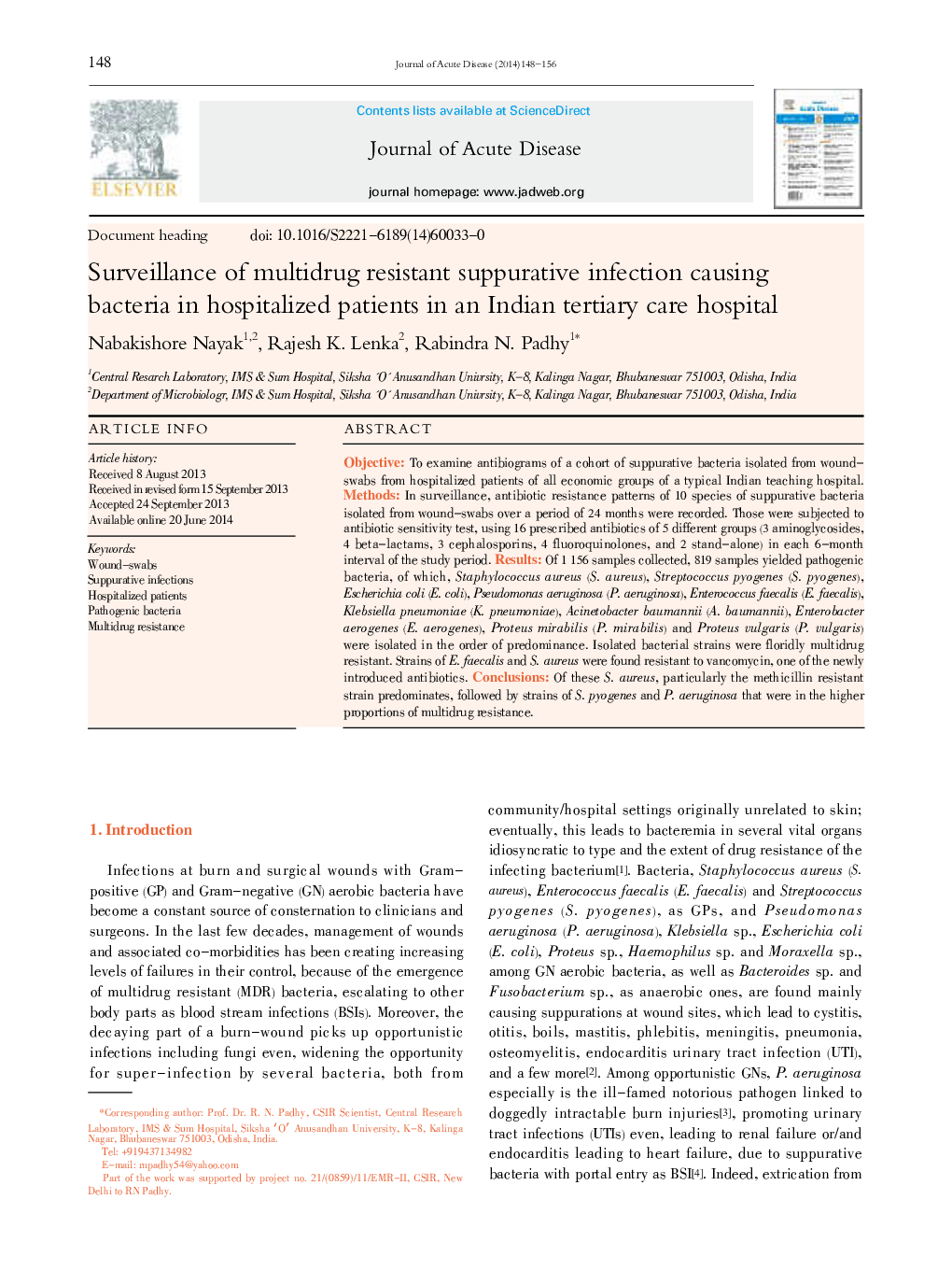| کد مقاله | کد نشریه | سال انتشار | مقاله انگلیسی | نسخه تمام متن |
|---|---|---|---|---|
| 3475277 | 1233188 | 2014 | 9 صفحه PDF | دانلود رایگان |
ObjectiveTo examine antibiograms of a cohort of suppurative bacteria isolated from wound-swabs from hospitalized patients of all economic groups of a typical Indian teaching hospital.MethodsIn surveillance, antibiotic resistance patterns of 10 species of suppurative bacteria isolated from wound-swabs over a period of 24 months were recorded. Those were subjected to antibiotic sensitivity test, using 16 prescribed antibiotics of 5 different groups (3 aminoglycosides, 4 beta-lactams, 3 cephalosporins, 4 fluoroquinolones, and 2 stand-alone) in each 6-month interval of the study period.ResultsOf 1 156 samples collected, 819 samples yielded pathogenic bacteria, of which, Staphylococcus aureus (S. aureus), Streptococcus pyogenes (S. pyogenes), Escherichia coli (E. coli), Pseudomonas aeruginosa (P. aeruginosa), Enterococcus faecalis (E. faecalis), Klebsiella pneumoniae (K. pneumoniae), Acinetobacter baumannii (A. baumannii), Enterobacter aerogenes (E. aerogenes), Proteus mirabilis (P. mirabilis) and Proteus vulgaris (P. vulgaris) were isolated in the order of predominance. Isolated bacterial strains were floridly multidrug resistant. Strains of E. faecalis and S. aureus were found resistant to vancomycin, one of the newly introduced antibiotics.ConclusionsOf these S. aureus, particularly the methicillin resistant strain predominates, followed by strains of S. pyogenes and P. aeruginosa that were in the higher proportions of multidrug resistance.
Journal: Journal of Acute Disease - Volume 3, Issue 2, 2014, Pages 148-156
